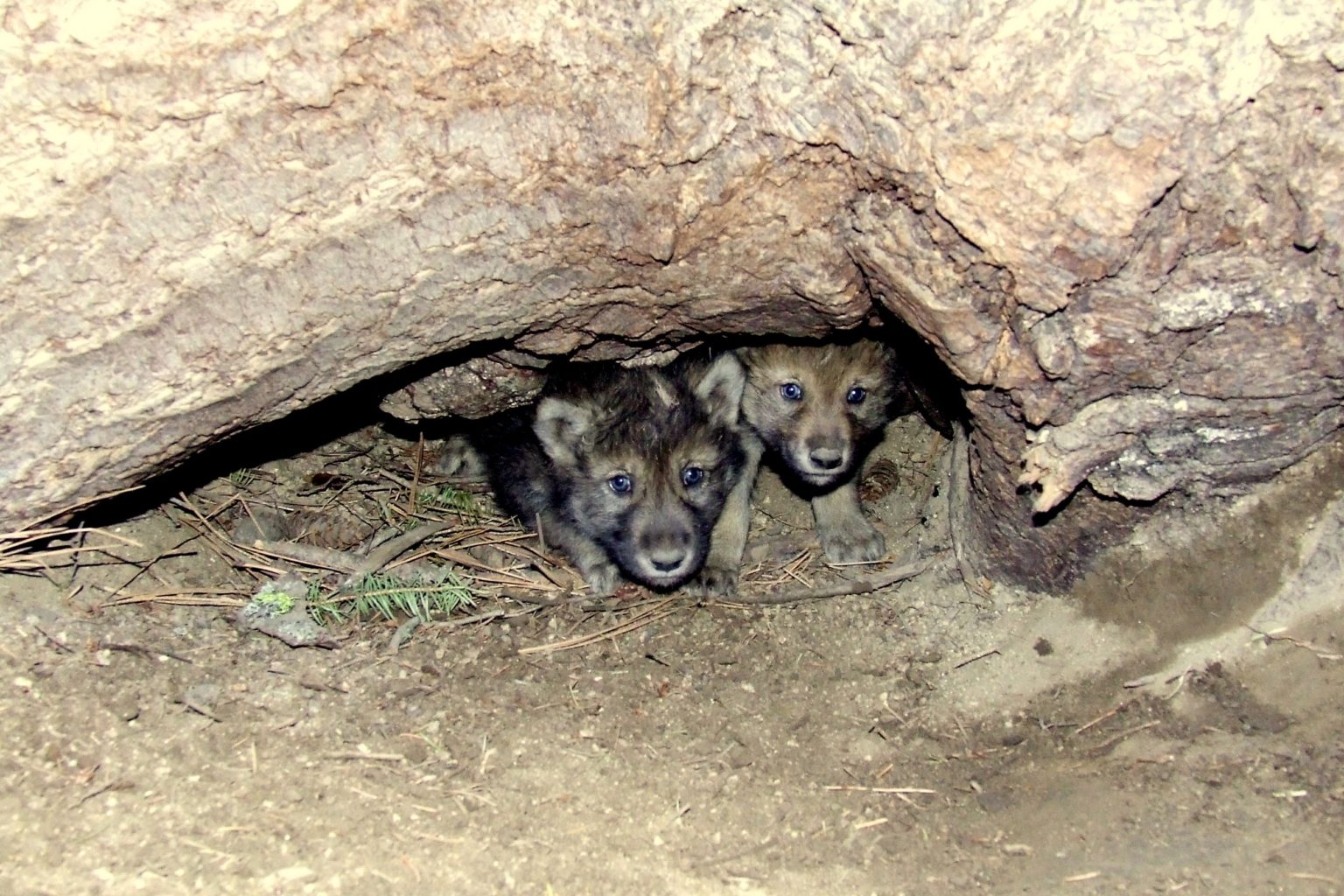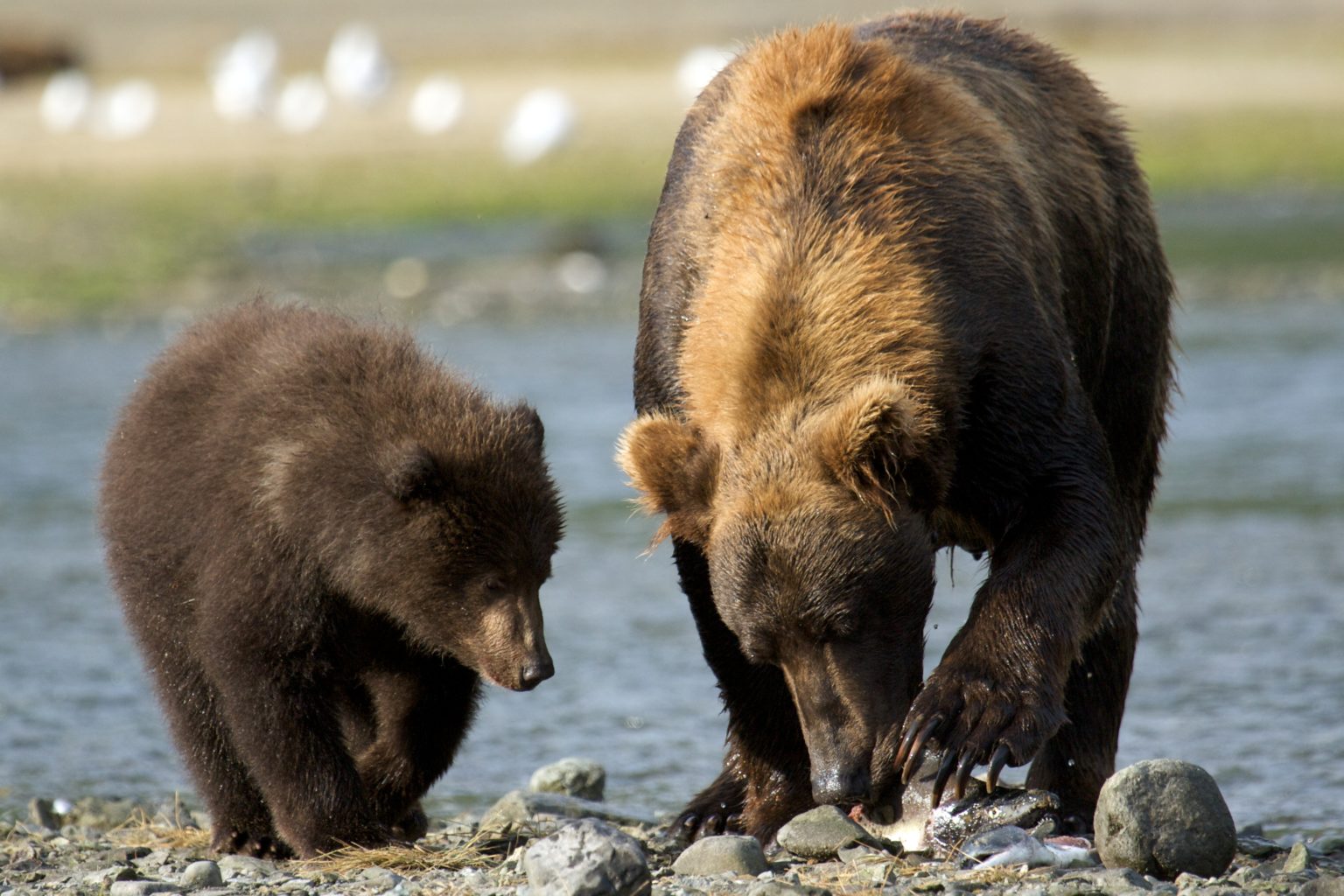Bad news for Alaska’s bears and wolves

The Trump administration has been hard on wildlife populations in Alaska, and this past week was no different as it pushes new rules to increase the killing of bears and wolves on Alaska’s public lands. Here’s more info on what they’ve done, and how we plan to fight back.
Final Rule for National Preserves Released
First, the bad news.
On Tuesday, the National Park Service finalized a new rule that allows: the killing of black bear sows and cubs while they hibernate; the shooting of wolves and coyotes and their pups while denning; and, the harvesting of caribou from motor boats as they swim across rivers in national preserves.
The Trump administration also green-lighted the baiting of black and brown bears, allowing the use of items such as dog food and doughnuts to lure bears out of their dens. These practices are not only unsportsmanlike, but they create a substantial hazard for other public land users. Those who recreate responsibly on Alaska’s public lands know that when bears taste human food, they instinctively seek it out again and again, putting future human visitors at risk.

This isn’t the kind of hunting that most hunters want or support. It’s unsportsmanlike, threatens wildlife populations at large, and puts people and property at greater risk. What’s more, this approach to wildlife management is completely out of step with the responsibility of the National Park Service to protect wildlife populations for future generations.
At Alaska Wilderness League we intend to continue fighting this horrific rollback. Many of you weighed when these changes were first proposed. You helped us build a record — of strong public backlash and sound science — that we can use if a new more conservation minded administration is elected. We’re also going to continue to take our case to Congress, working closely with national and state-based conservation allies in fighting for the mission and longstanding mandate of the National Park Service.

Draft Fish and Wildlife Refuge Regulations Open for Public Comment
It’s not just wildlife in national preserves that are under attack — bears and wolves in Alaska’s fish and wildlife refuges are also in the crosshairs. Just yesterday a comment period opened that could allow brown bear baiting in parts of the Kenai National Wildlife Refuge, among other changes. This policy would further impact a population of bears that have been heavily hunted in recent years, as the State of Alaska tries to manipulate predator populations to increase moose populations for, well, even more hunting. This strategy — referred to as “intensive management” — not only defies science, but it runs afoul of the very reasons why national wildlife refuges are established in the first place. And again, it isn’t what responsible, conservation-minded hunters want. We need your help commenting on these regulations today.

But wait, there’s more — these regulations also make it easier to run traplines in parts of the Kenai National Wildlife Refuge, again, with a goal of matching up with State of Alaska regulations that aim to reduce wolf populations. These traplines in heavily populated areas like the Kenai Peninsula pose all sorts of threats to humans, and even their pets as well — in the neighboring Chugach National Forest, dogs are often caught as they run off a trail. Populated areas of the Kenai are no place for expanded trapping. And like bear populations in the region, a healthy wolf population isn’t compatible with expanding these practices.
You can help us build a record by sending in your comment today. We need an overwhelming public outcry to build a public record that will enable us to fight back in Congress, in the courts and in the arena of public opinion. And if the Trump administration won’t listen, we’ll be sure to share the comment results with the next president and with our friends in Congress as well.
What happens next?
We’re evaluating all options. But there is a real risk that wolf pups, bear cubs and other wildlife will start being killed in ways that have no place in national preserves and national wildlife refuges. Together with our allies, we’ll be looking at ways to pressure public land managers to implement these new rules as narrowly as possible even as we fight for their reversal.
While much may depend on the shifting political landscape, we also need to rally a broad-based backlash from all who care about wildlife and the management of our public lands, and from those who love to hunt, fish, hike, birdwatch and recreate on Alaska’s national preserves and national wildlife refuges.
